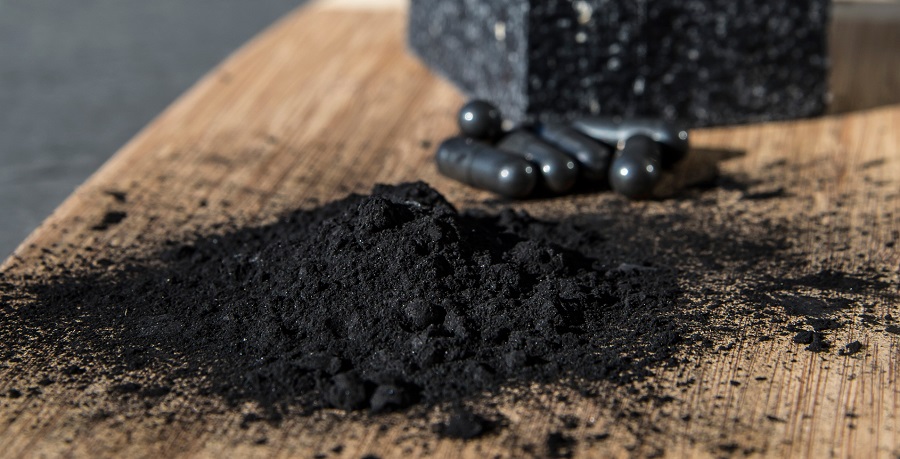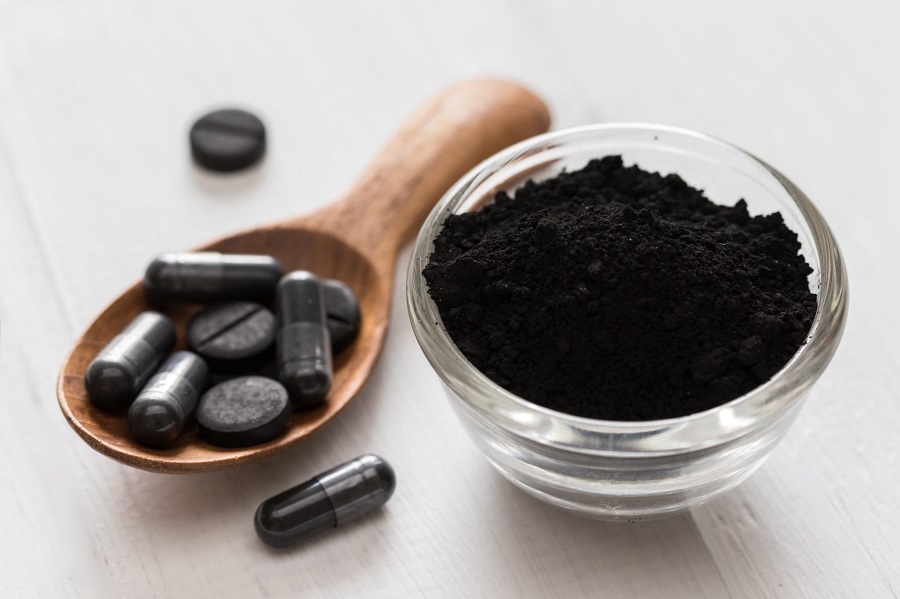Activated carbon is a porous powder with applications in different fields, such as industry or medicine. Find out what is its mechanism of action and what are its main uses.
Activated carbon is a porous substance, widely used to adsorb drugs and toxins present in the gastrointestinal tract.
The content of summery:
- Activated carbon
- Activated carbon to treat poisonings
- Characteristics of activated carbon used in poisoning
- Characteristics of activated carbon used in poisoning
- Considerations to take into account
Activated carbon
Activated carbon is a carbonaceous, crystalline and highly porous powder. This high porosity gives it the ability to retain other molecules of liquids, gases or vapors, in a phenomenon known as adsorption. In the adsorption, the solid surface, the adsorbent, retains the adsorbate, which may be an atom, ion or molecule.

Due to these properties, activated carbon is used in different separation processes. Some of its applications are:
- Extraction of metals.
- Purification of drinking water.
- Sewage treatment.
- Car emission controllers.
- In medicine, in cases of poisoning.
Activated carbon to treat poisonings
The administration of this substance to treat gastric poisoning has three possible objectives:
- Reduce the intestinal absorption of toxins ingested orally. This is due to the fact that the activated carbon is absorbing and retaining said toxic compounds as it passes through the gastrointestinal tract.
- Facilitate the elimination of said toxins that are absorbed in the general circulation.
- Treat chronic intoxications, accelerating the elimination of long-lived substances.
It is usually administered through a nasogastric tube and dissolved in water, carrying out a gastric lavage. Maximum efficiency is usually achieved around one hour after washing has been carried out.

However, on certain occasions and when the patient is conscious, they may ask for your help and administer this substance orally, without the need for a catheter. It can be used as a single dose or in repeated doses and is effective in poisoning by various compounds, such as aspirin, digoxin, phenobarbital, anticholinergics, opioids … You can also try some home remedies to relieve stomach pain.
Its administration is contraindicated in poisonings by:
- Corrosive products such as acids or strong bases.
- Cyanide.
- Alcohol.
- Petroleum derivatives.
- Metals.
Characteristics of activated carbon used in poisoning
Although there are numerous types of activated carbon, however, in the medical field, and specifically for use in gastric decontamination, said compound must comply with the following:

- It must be This is because the toxins that have to be eliminated have a diameter of less than 2 nano meters, while the harmless organic molecules such as proteins and fats are of a larger size.
- It must be of vegetable origin. Coals of mineral origin should be avoided since they present metallic compounds such as sulfides that can be absorbed in the intestine and be toxic to the organism.
- It must be thermally activated. There are different activation processes of this compound, which give it its adsorbent capacity. However, in these cases, thermal activation is preferred since it gives rise to a carbon that is harmless to the organism.
Considerations to take into account
There are cases in which the administration of activated charcoal is not recommended. This is the case of patients with unprotected airways, for example, if they are intubated since in these cases the nasogastric tube needed to administer the activated charcoal could be dangerous.
Nor is gastric lavage recommended by means of activated charcoal in patients with a high risk of gastric perforation, since their condition may be aggravated. This is the case of people with intestinal hemorrhages or those with other types of diseases added.
Also, due to the adsorbent capacity of activated carbon toxins, this can interfere with other drugs administered to the patient. For this reason, the absorption time of the drugs that will be used must be meticulously studied to avoid possible interference between both treatments.
Other applications of activated carbon

Activated charcoal can also be used in the treatment of other milder gastrointestinal conditions, such as indigestion or flatulence. In these cases, the mineral is administered in small quantities by means of capsules.
Another of its applications, which is not without controversy, is the treatment of infections by microorganisms. The defenders of this type of treatment, assure that the activated carbon is able to absorb the bacteria that cause the infection and help its elimination through the feces.
Finally, activated carbon can also be applied as a dressing on the skin in cases of strings of bees or wasps, to remove poisonous toxins.
If you like this article, please share with your friends and family, and also share with your social platform.
Have a nice day!!

